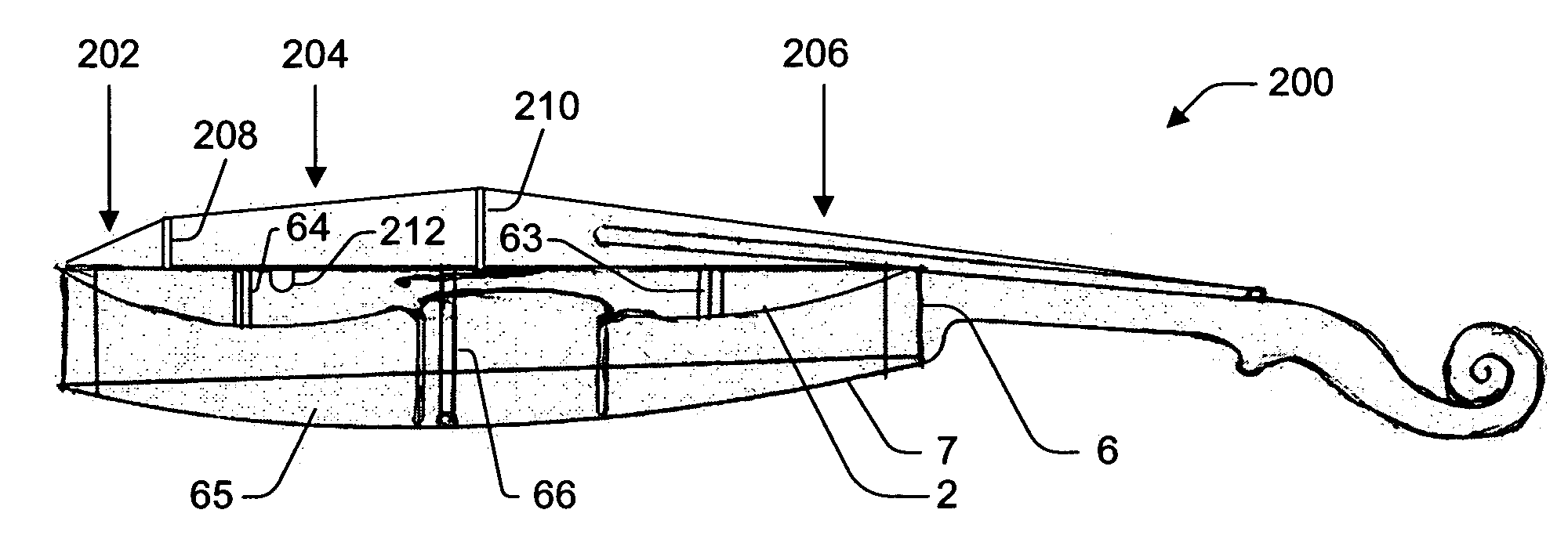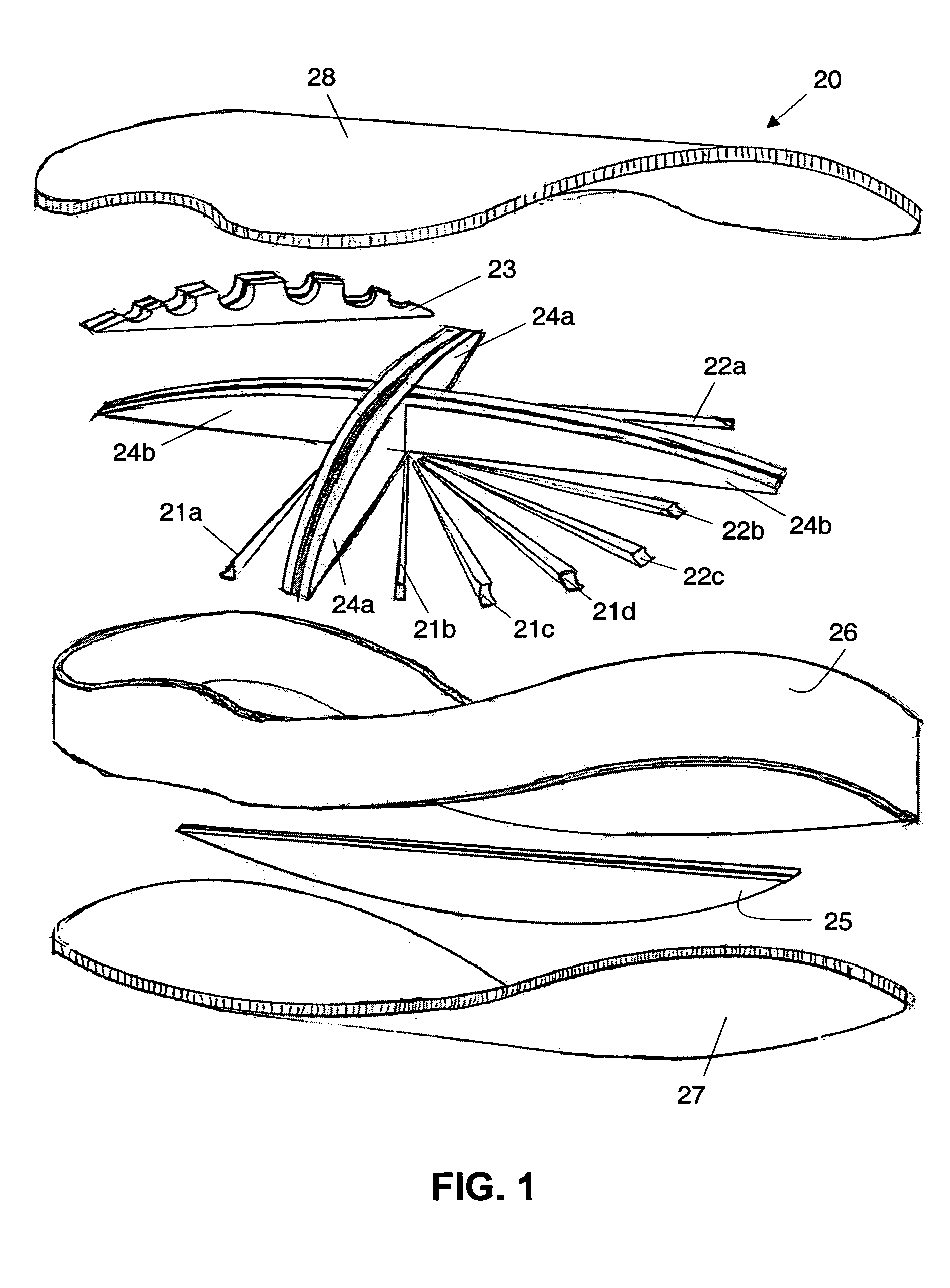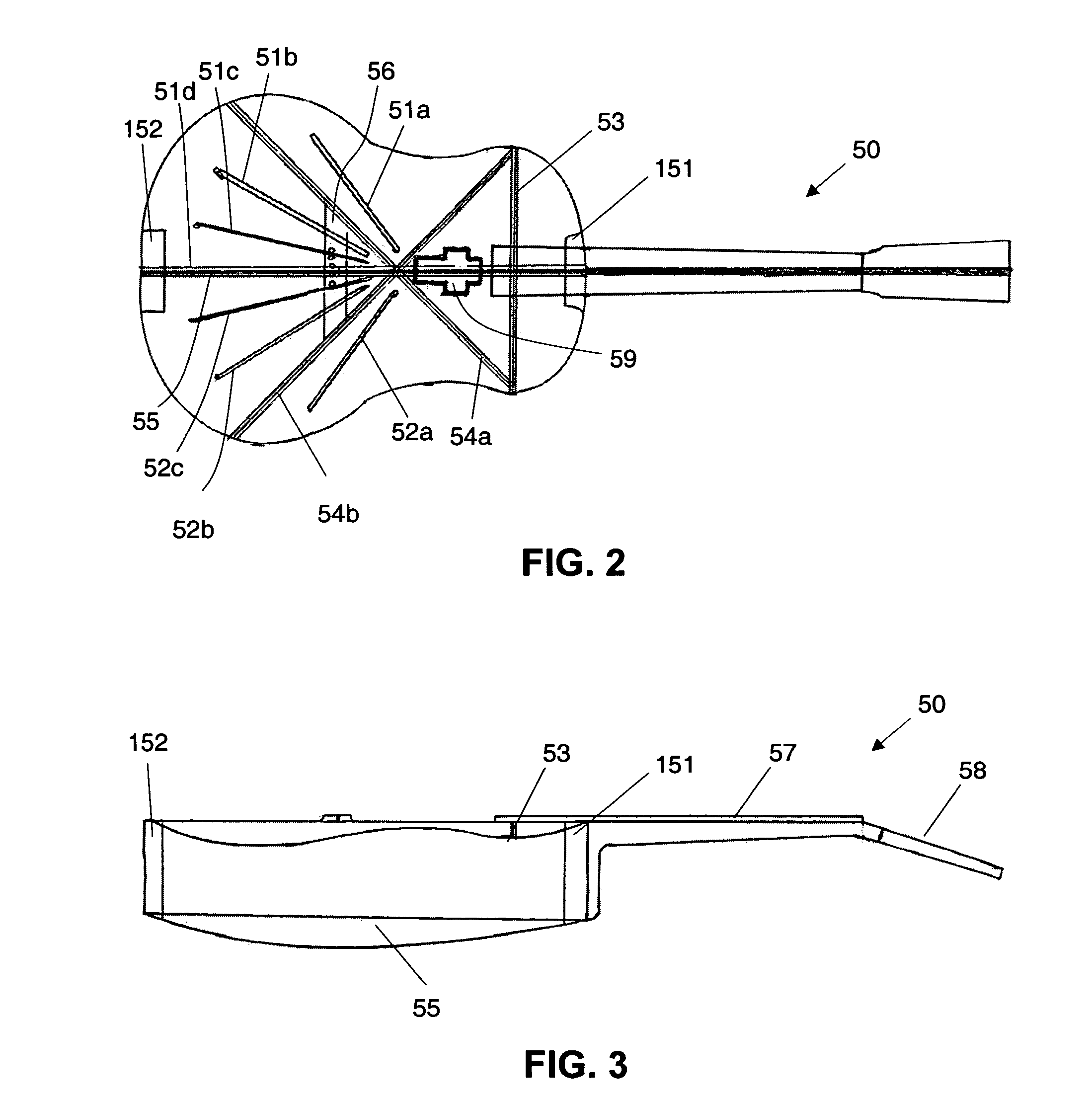Stringed musical instrument having harmonic bridge
a musical instrument and bridge technology, applied in the field of stringed musical instruments, can solve the problems of wolf mutes affecting the characteristics of the instrument, inability to produce enough energy, inability to achieve harmonic bridge, etc., and achieve the effect of increasing harmonic complexity and richness of ton
- Summary
- Abstract
- Description
- Claims
- Application Information
AI Technical Summary
Benefits of technology
Problems solved by technology
Method used
Image
Examples
Embodiment Construction
[0044]The sound produced by a musical instrument is highly dependent on the instrument's construction, including the choice of materials, the size, shape and placement of the components, and the way in which the components are attached. Some stringed instruments such as the modern piano rely on a soundboard for producing sound, and have no bottom, enclose no space, and therefore have no air resonance modes and can be considered to be acoustically transparent. Some stringed instruments such as guitars, lutes, violins, cellos, harps, and Viennese and South German pianos of the Classical period are closedbox musical instruments in which air resonances play a very active role in how acoustic energy flows through the entire system, causing subtle changes in the volume and sustain of the vibrations induced in the soundboard by the strings, and ultimately, the timbre radiated to the ears. These air resonances include many modes of resonance, all occurring simultaneously, and all filtering ...
PUM
 Login to View More
Login to View More Abstract
Description
Claims
Application Information
 Login to View More
Login to View More - R&D
- Intellectual Property
- Life Sciences
- Materials
- Tech Scout
- Unparalleled Data Quality
- Higher Quality Content
- 60% Fewer Hallucinations
Browse by: Latest US Patents, China's latest patents, Technical Efficacy Thesaurus, Application Domain, Technology Topic, Popular Technical Reports.
© 2025 PatSnap. All rights reserved.Legal|Privacy policy|Modern Slavery Act Transparency Statement|Sitemap|About US| Contact US: help@patsnap.com



